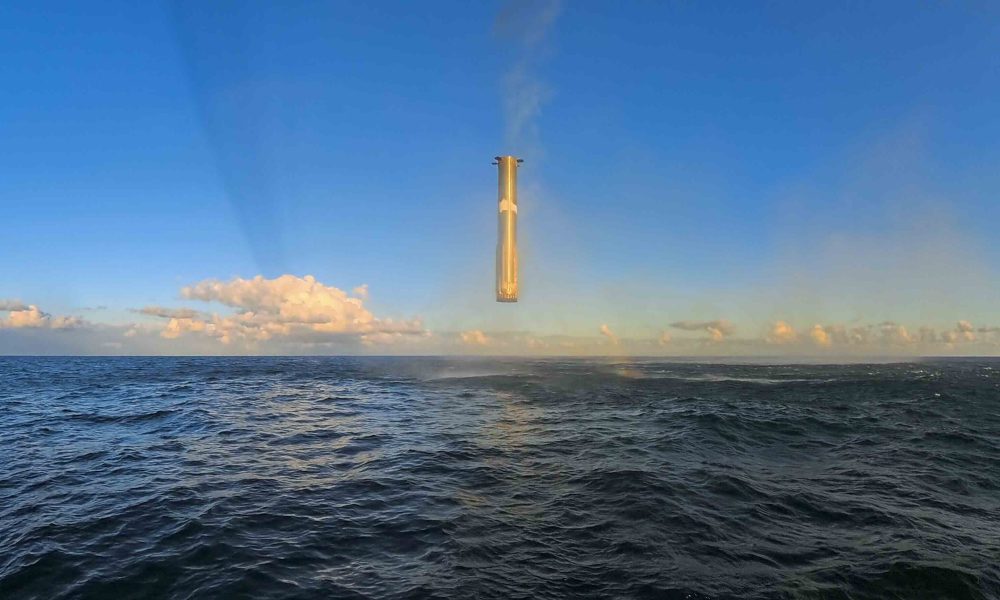
SpaceX has demonstrated a significant achievement in space technology with its Starship Super Heavy booster during the recent 11th flight test. The booster executed an impressive hover above the Gulf of Mexico, with a video of the maneuver showcasing its near-perfect stability and control. This remarkable feat is part of SpaceX’s ongoing efforts to enhance the reusability of its launch systems.
Successful Test and Milestones
In the video released by SpaceX, the Super Heavy booster, which stands nearly 400 feet tall, returned from its mission and hovered gracefully before performing a soft water landing. The maneuver was so flawless that some observers on social media platform X remarked that it appeared almost artificial, underscoring the advancements SpaceX has made in rocket technology.
Flight Test 11 successfully met all major objectives set by SpaceX, including the deployment of Starlink mass simulators, the relighting of Raptor engines during the flight, and achieving a stable reentry for both the Starship Upper Stage and the Super Heavy booster. According to Space.com, this marked the second time a Super Heavy booster has been reflown, a crucial milestone in SpaceX’s goal of creating a fully reusable launch system.
Transition to Starship V3
With the completion of this test, the Starship program is set to transition from the V2 vehicle to the upgraded Starship V3. This new iteration is designed to facilitate faster turnaround times and greater payload capacities. Elon Musk, CEO of SpaceX, has indicated plans for more ambitious missions in the near future. He announced on social media that SpaceX aims to attempt a tower catch for the Starship Upper Stage as early as spring 2026.
The advancements seen in the Super Heavy’s performance highlight SpaceX’s commitment to maintaining its leadership position in the spaceflight sector. As the company continues to innovate and push boundaries, the successful execution of the Super Heavy’s hover maneuver marks a significant step towards more efficient and sustainable space travel.







